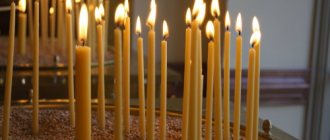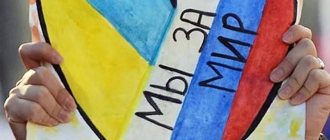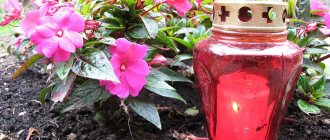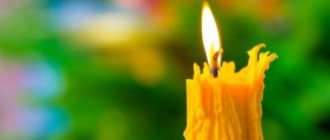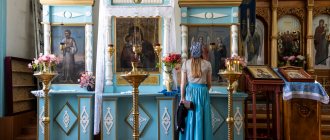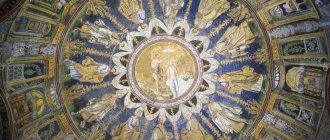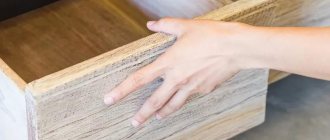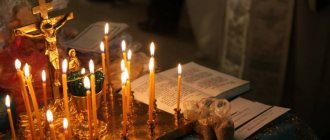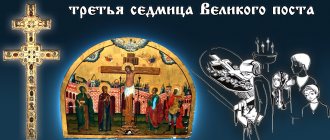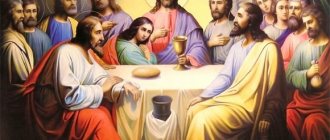Lighting candles on Shabbat
Telegram channel @ieshua.org
There is a Shabbat prayer for lighting candles. And so I heard that it was incorrect, since supposedly the Almighty did not command to light candles on Shabbat. I want to know your opinion - is it worth using it, and where did this tradition even come from? (Alina)
Answers Dmitry Yu. , Messianic teacher:
Let's try to answer what the Almighty commanded on Shabbat.
There are five mitzvot (commandments) that are traditionally prescribed for a Jew. Two positive and three prohibitive.
Rest on Saturday . “And on the seventh day you shall rest” (Shemot 23:12)
Making the Sabbath holy . “Remember the Sabbath day to sanctify it” (Shemot 20:8).
Well, it is clear that there is a reason for creativity here - how exactly to sanctify and how exactly to rest.
I think a much greater reason for creativity is the following commandments:
It is forbidden to work on Saturday . “You shall not do any work on Shabbat” (Shemot 20:10).
Well, on the topic - what is work and what is not - here those who create it, our tradition, do not get tired of working until today and continue to make decisions about what is work and what is not.
It is prohibited to go beyond the permitted distance from the city boundaries on Saturday . Shemot 16:29 “Let no one leave this place on the seventh day”
Again, we were in the desert, and not in the city, and it is clear that the distance of the Saturday journey was not indicated, and 2000 cubits, so to speak, is the work of the sages.
Well, we actually got to the fire.
It is forbidden to light a fire on Saturday . Shemot 35:3 “Do not light a fire in your towns on the Sabbath” So, we can see the prohibition on lighting a fire.
Shemot 16:23 And he said to them, This is what the Lord said: Rest, a holy Sabbath to the Lord tomorrow; what you bake, bake, and what you cook, boil; Still, put the excess aside for savings until the morning
Well, of course, and cooking, since it was associated with lighting a fire. So, five main ones, it doesn’t end there.
So, where can we see the commandment to light, when we see the commandment not to light, and where did the tradition of lighting come from, when there is a prohibition not to light? 
I think it's quite simple. The whole family gathers for a festive dinner, which will be held in the dark, due to the ban on lighting a fire. Isn't it easier to prepare for this and light a fire when this can still be done before the onset of Shabbat? So, the tradition of lighting Shabbat candles so as not to eat in the dark, I think, arose from the ban on lighting a fire on Shabbat.
Let's return to one more commandment to keep the Sabbath holy. To sanctify, to separate it from all other days - this is where the tradition of separation (sanctification) came from when we meet and see off Shabbat. Before Shabbat begins, we light candles and pray; after Shabbat has ended, we also pray and light candles.
Thus, we not only welcome Saturday, but also see it off, separating it on both sides from the whole week. People have heard about the Shabbat meeting, but most have not heard about Havdalah (seeing off).
So, if you separate the days for the Lord, you can say a prayer at the beginning of the Sabbath and at the end of it, well, in order to separate the Sabbath.
You can also pray every morning and every evening - also, it seems to me, a good practice :), it may not be accompanied by lighting candles.
Well, if you like it, you can rock it.
So, we live in the New Testament and we believers of the New Testament are told:
Rom.14:6 He who discerns the days discerns them for the Lord; and he who does not discern the days does not discern for the Lord. Whoever eats eats for the Lord, for he gives thanks to God; and whoever does not eat does not eat for the Lord, and thanks God.
So, if you decide to light candles on Shabbat and pray, you will not sin, if you do not do this, you will not sin either, act according to the evidence of your mind.
In general, as I understand it, the Almighty is pleased when the whole family gathers at the festive table, thanks Him for what He has given, they bless the Creator, the father blesses his children and wife. Personally, I don’t see anything wrong with this - the family is together, the children see the correct order of things in the house. It seems to me that this is a good tradition.
So, I think that if someone considers such a tradition incorrect, I personally like it and my family too. If someone thinks differently, they don’t have to do it.
Personally, I don’t see anything incorrect if my family and my friends, or just guests, sit down at the table at the end of the week, light candles (well, at least for romance), and say all together thank you to the Creator for spending this week with us and ask Him to bless this weekend and be in the place with us.
I hope that in this answer you will find what you were looking for.
Donate Last: 02/28. Thank you!
Subscribe: Telegram • Facebook • • • Twitter • Instagram • Youtube
More on the topic:
- Can a challah cover be used for breaking bread?
- Do the laws of lashon ha-ra (evil tongue) apply to Messianic Jews?
- Is lighting Shabbat candles a commandment from God?
- If “love your neighbor” is the whole law, why are we taught about tithing, the Sabbath, etc.?
Meaning of Hanukkah
Hanukkah is one of the oldest holidays that has survived and survived to this day without undergoing any special changes. I would like to note that the Jewish calendar is significantly different from what we are used to, so December 9-12 is only a conditional date for the beginning of Hanukkah. However, it is the end of the year that is key for the holiday. At this time, the days become shorter and the nights become darker and longer.
The name of the holiday is fraught with many mysteries. If we try to translate it literally, we get the following: “hanu” - “attainment of peace” and “ku” - “twenty-five”. At first glance, it seems not entirely clear, but I will try to explain the true meaning of these words.
Lighting candles is an important ritual of the holiday Elena Nikolaevna Flerova “Hanukkah”
As already noted, the celebration begins on the 25th of Kislev. This is not just a chosen date - it was on this day that the Jews defeated the Greeks in 164 BC.
Another version of the origin of the name Hanukkah is from the word “lahant”, which means “purification”. It was on this day that the Jerusalem Temple, whose altar had been desecrated, was re-consecrated. In our time, Hanukkah can rightfully be called the celebration of light.
Hanukkah - the holiday of light among the Jewish people Celebration of Hanukkah, 1949
History of Hanukkah
But when did they first start celebrating it? In the distant past, even during the reign of Alexander the Great, when the lands of Israel belonged to Syria and Greece, the two peoples tried to find mutual understanding.
The Jews tried to remain law-abiding citizens, and the Greeks were lenient towards other faiths in the conquered lands. When Antiochus IV Epiphanes comes to power, drastic changes for the worse begin. The new Syrian ruler tried to impose Greek beliefs on the conquered peoples, which caused unrest and rejection.
Threatening execution to the Jews, Antiochus IV forbade the practice of their own religion. Moreover, an altar of Zeus was installed in the Temple of Jerusalem, which was a terrible desecration of a sacred place. Of course, such actions of Antiochus aroused more and more anger among the people.
The result was an uprising in Modin, and a few years later the Jews restored justice. If we calculate the total time of the struggle, we get the same number - twenty-five years. Traditions say that after the rededication of the temple, all the relics of the idolaters were thrown away.
But the Jews faced a difficulty. Almost all the jars of oil that kept the lamp burning were desecrated. All that was left was a very tiny vessel. The oil from it would barely have been enough for a day, but the incredible happened - the fire continued to burn all the following days, confirming the miracle that had happened.
Elena Flerova “Hanukkah”
When can you eat?
After lighting the candles, the family and guests gather at the table, several traditional formulas are recited - the Shabbat hymn “Shalom Aleichem” and the special hymn “Eshet Hail”, a praise of the wife, which is pronounced by the husband and sons of the mistress of the house.
On the table there must be two challahs covered with a cloth (in honor of the two portions of manna from heaven sent by G-d to the Jews daily during their wanderings in the desert), and wine or grape juice. Traditionally, the man—but in liberal communities also the woman—says a special blessing (kiddush) on the wine, takes a sip, and gives a sip to others. Then everyone washes their hands, the man says a blessing on the challah, tears off a piece, dips it in salt, eats it and gives it to the others. After this, you can start the festive dinner.
Photo: Pexels
Prohibited works
There are thirty-nine types of work (prohibited on the Sabbath). This:
- Zorea (planting).
- Khoresh (plowing)
- Kotser (harvest).
- Meamer (binding of sheaves).
- Dash (threshing).
- Zore (separation of grains from the remains of straw, which in Russian is called “winnow”).
- Borer (separation of grains from impurities - lumps of earth, small pebbles, seeds of other plants, etc.).
- Tohen (grinding grains).
- Meraked (sifting flour).
- Lash (kneading dough).
- Ofe (baking bread products).
These eleven points, as we see, represent the main types of work included in the process of making bread “lechem hapanim” (according to the Jerusalem Talmud) or for the production of dyes that were made to color the coverings of the Mishkan. The following thirteen points “describe” the process of producing the material that covers the mishkan.
- Gozez (sheep wool shearing).
- Melaben (wool whitening).
- Menapets (combing wool).
- Tsovea (wool coloring).
- Tove (making yarn from wool or flax).
- Meyseh (pulling threads on a loom).
- Ose shtei batey nirin (install longitudinal parallel threads on the loom for the warp of the fabric).
- Oreg (weave).
- Potseh (unravel the fabric).
- Kosher (tying knots; the word is not associated with concepts denoting kosher food).
- Matir (untying of knots).
- Topher (sewing).
- Corea al mnat litfor (tearing the material in order to sew it later).
The following seven points give the names of the main types of work that make up the preparatory process for the production of leather products, which also serve for the veil of the Mishkan.
- Tzad (to hunt).
- Shohet (to slaughter cattle).
- Mafshit (skinning carcasses).
- Meabed (processing, tanning of leather).
- Memakhek (skin smoothing).
- Mesartet (cut)
- Mehatech (cutting leather into pieces according to a pattern).
In the next group, the work necessary for the construction of the Mishkan itself, as well as the preparation of dyes for the coverings of the Mishkan and the transfer of parts of the Mishkan during the wanderings of the Jews in the desert.
- Kotev shtei otiyot (writing two letters).
- Mohek al mnat lichtov shtei otiyot (erasing two letters in order to write them again).
- Bone (construction).
- Soter (destruction of what was built).
- Mehabe (fire extinguishing).
- Mavir (kindling a fire).
- Make be-patish (delivering the final blow with a hammer, (any action that brings an object into a state of readiness, for example; tuning musical instruments, inserting new laces into shoes, tearing toilet paper along the perforation line, etc.)).
- Motsi mi-rshut le-rshut (transfer of objects from private to public).
